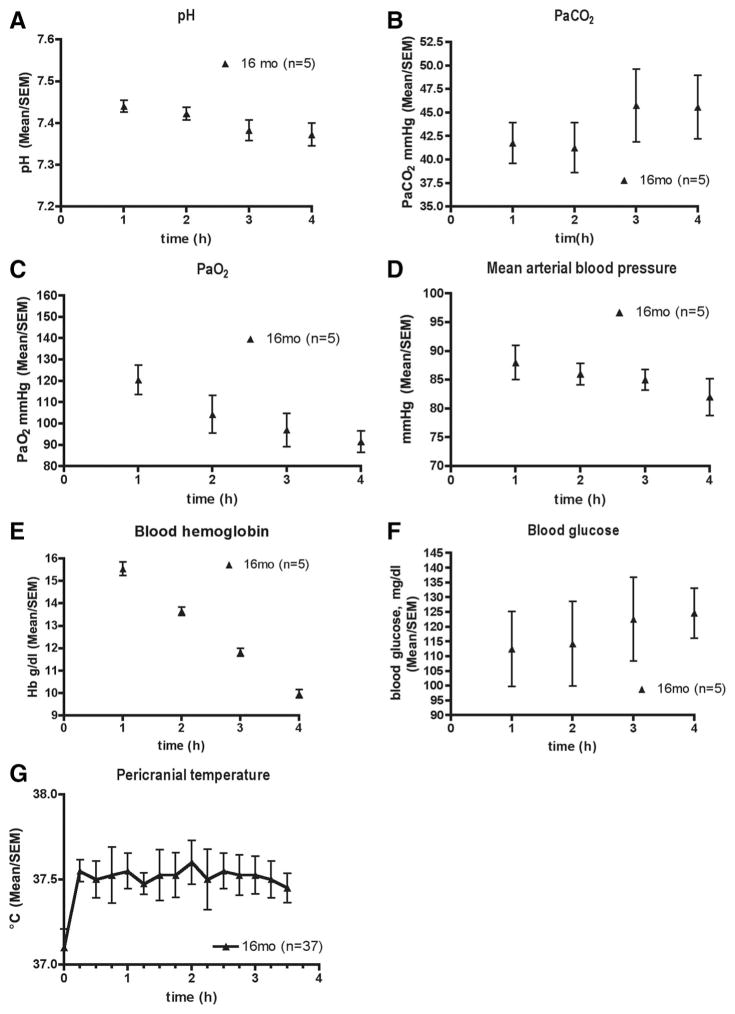Fig. 2.
Physiologic variables over 4 h of isoflurane anesthesia in 16-month-old rats. Data are pH (A), arterial carbon dioxide tension (PaCO2) (B), arterial oxygen tension (PaO2) (C), mean arterial blood pressure (D), blood hemoglobin (Hb) concentration (E), blood glucose concentration (F), and pericranial temperature (G) from five cardiorespiratory control animals that were not used for any other part of the study. The exception is pericranial temperature, which was computer-controlled and recorded in all animals individually (n = 37).

